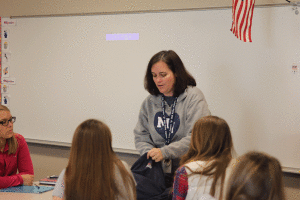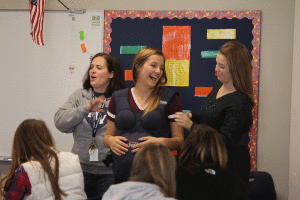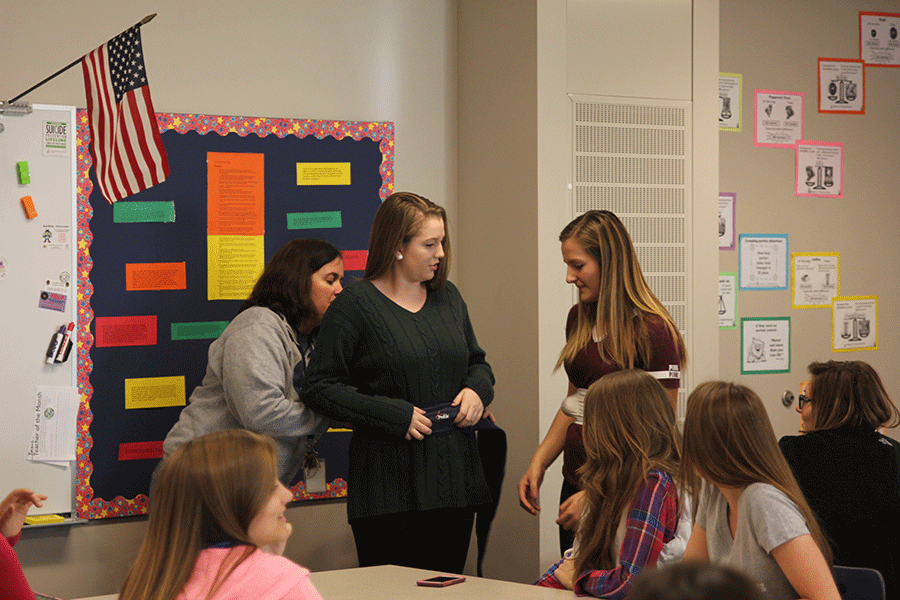Students use empathy bellies to replicate the weight of pregnancies
Students in Family Studies simulated the effects of pregnancy through empathy bellies
By Claire Boone
Senior Eileen Marti receives help from Family and Consumer Sciences teacher Ellee Gray while putting on an item that is supposed to remember a baby’s feet.
October 31, 2015
Motherhood arrived early for students in Family Studies when the class simulated the weight of carrying a child through the use of empathy bellies.
The empathy bellies, according to Family and Consumer Sciences teacher Ellee Gray, are used to show students the effects of pregnancy. A sack containing water and a ball in the center is secured onto a person — replicating the weight of a child — along with two smaller balls, which push into the the ribs of the person, simulating the the feet of a baby. To emphasis the difficulty of carrying a child, Gray created small tasks for the class to do that required bending over to pick up objects.

Family and Consumer Sciences teacher Ellee Gray shows students of her Family Studies class what is on the inside of an empathy belly.
For junior Alina Ruiz, this was one of the most difficult aspects of having to deal with an empathy belly.
“We would have to pick things up she would throw and we could only squat because it was hard to pick it up any other way,” Ruiz said.
Going into the experiment, senior Katlyn Seyb expected the burden of a child’s weight to be difficult.
“I expected to be heavy and have to use the restroom a lot and then feel pain and hurt,” Seyb said.
Carrying the baby around class, and in the hall, senior Eileen Marti felt relaxed at first, but later found the baby to be challenging.
“I thought I was going to be fine — and I was at first — but now my back really hurts and I’m really hot,” Marti said.

Family and Consumer Sciences teacher Ellee Gray and senior Eileen Marti assist senior Katylyn Seyb with putting on an empathy belly.
As a male, sophomore Brady Watkins discovered a new appreciation for mothers when dealing with an empathy belly.
“Sleeping is awful and I wouldn’t want to deal with nine months of that,” Watkins said. “It was very difficult and I did not enjoy [the empathy belly].”
The experiment of empathy bellies gave the students of Family Studies a greater understanding of pregnancy and its consequences.
“[Students] can realize the real consequences of getting pregnant and how hard it is,” Seyb said. “[It’s hard] not only having a baby, but also having to carry the baby.”










